The Complete Guide To Personal Training
9th Jun 2023
Chris Nicklin is a certified Personal Trainer with over 7 years' experience, and the owner of Nxtep Personal Training. Chris qualified from Edge Hill University with a Bachelor of Science (BSc) degree in Sports Coaching and Performance Development, and has delivered over ten thousand one-to-one Personal Training sessions.
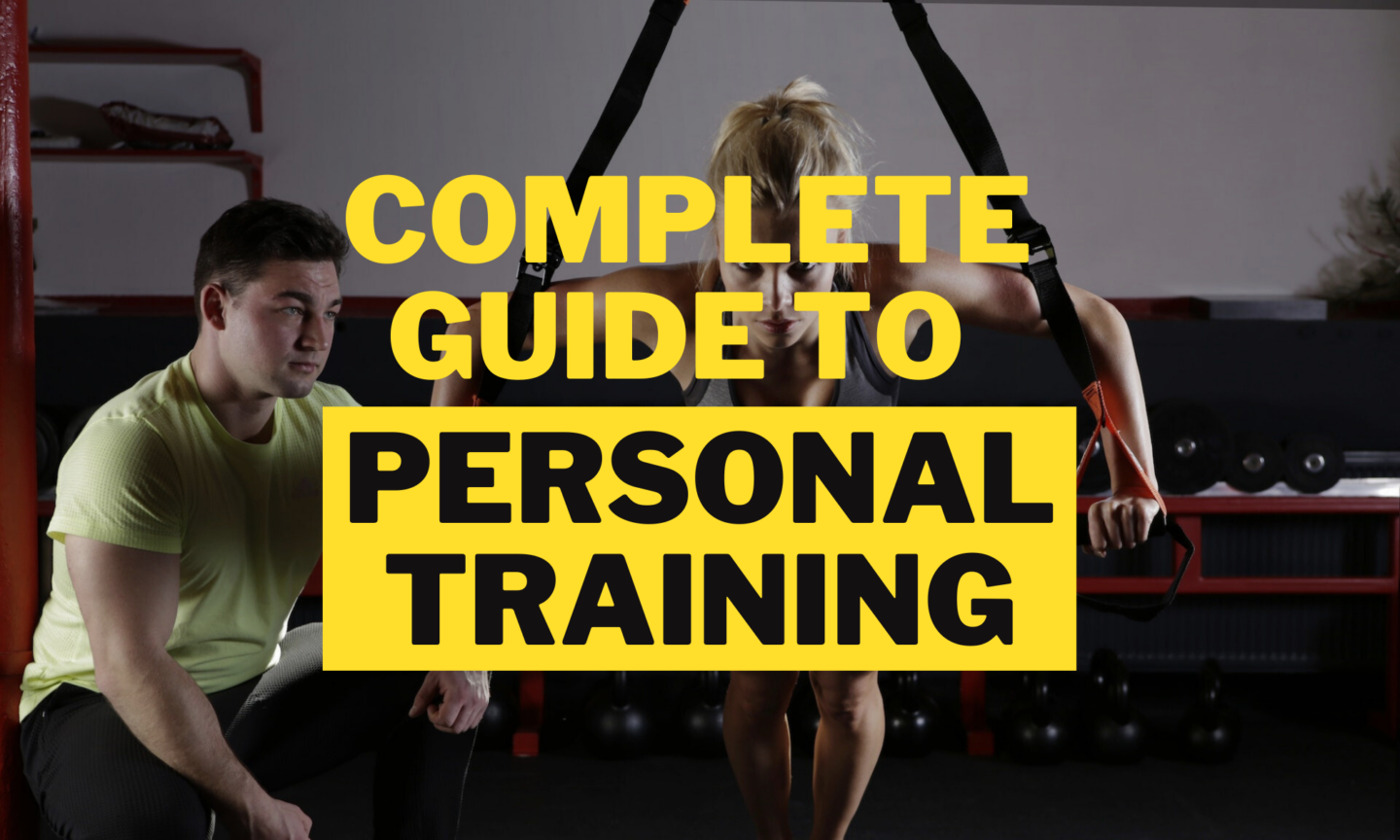
Personal training is about much more than just pumping iron or hitting the treadmill like a hamster on a wheel; it’s a whole world of fitness techniques that cater to your unique needs and goals. We’re talking about strength training to build those muscles, cardio workouts to get your heart pumping, and flexibility training to make you as bendy as a pretzel. And the best part? It’s all tailored just for you!
As a qualified personal trainer with over 7 years’ experience and my own private personal training gym, I thought it was time for me to share everything there is to know about personal training in one place. And if you’re feeling extra ambitious, I’ve even shared my advice on how you can become a personal trainer yourself. We’re talking about creating a business plan, marketing your services, and helping others on their fitness journey. So grab your protein shake, strap on your trainers, and get ready to dive into the world of personal training!
What is Personal Training?
Personal training is an incredible one-on-one fitness programme led by a certified trainer who’s all about helping you achieve your specific health and wellness goals. It’s a highly personalised experience where you work closely with a professional to develop customised workout plans and receive proper form instruction. Unlike group fitness classes, personal training provides individualised attention to ensure safety and effective exercise progression.
One of the greatest benefits of hiring a personal trainer is the personalised attention you receive. They create workout plans tailored to your unique needs and goals. These trainers are specialised experts in various areas of fitness, like strength training, cardiovascular endurance, and flexibility improvement. They’ll safely guide you through your workouts while pushing you to reach your goals. Their client-centred approach ensures that you get the support and guidance you need throughout your fitness journey.
Whether you’re looking to build strength, improve your endurance, or enhance your flexibility, personal trainers have the knowledge and expertise to help you. They’re not just there to count reps; they’re your partners in success. They’ll challenge you, motivate you, and celebrate your progress every step of the way. With their guidance, you’ll achieve optimal health and wellness outcomes that leave you feeling strong, confident, and empowered.
So, if you’re ready to take your fitness to the next level, personal training is your ticket to success. It’s a programme that prioritises your individual needs, ensuring that you receive the guidance, support, and expertise necessary to reach your fitness goals. Get ready to embark on a transformative journey with a personal trainer who will empower you to become the best version of yourself. Let’s make those goals a reality!
Benefits of Personal Training

Photo by Julia Larson
Hiring a personal trainer comes with a truckload of advantages that can take your fitness journey to new heights. First off, you get a customised workout plan that’s designed just for you. Your trainer takes into account your fitness level, goals, preferences, and any health conditions, ensuring that every aspect is tailored to meet your needs.
But that’s not all! Personal trainers are experts in motivation. They know how to keep you focused and fired up about your fitness goals. They provide unwavering support, constant encouragement, and valuable feedback during your workouts, keeping you motivated and pushing you forward. And let’s not forget about progress tracking. Trainers regularly assess your progress to see how far you’ve come from your starting point. This helps them fine-tune your programme as needed, ensuring that you’re always moving forward.
Accountability is another game-changer in personal training. With a personal trainer by your side, you have someone who’s counting on you to show up and give it your all. They keep you consistent and committed, pushing you to work towards your goals day in and day out. Plus, personal training goes beyond just physical fitness. It emphasises the mind-body connection, incorporating mindfulness activities like meditation or yoga into your workouts. It’s a holistic approach that benefits both your physical performance and mental well-being.
So, whether you want to improve your overall fitness levels or conquer specific fitness goals, hiring a personal trainer is a smart move. You’ll experience the incredible perks of a personalised approach, with a programme crafted exclusively for you. Motivation techniques will keep your fire burning, progress tracking will keep you on the right path, and accountability measures will ensure you stay committed. Get ready to unleash your full potential and achieve those desired results! In the next section, we’ll explore the different types of personal training available today. Let’s keep the momentum going!
Types of Personal Training Available in 2023
Personal training has evolved from a one-on-one session with a trainer to various options like small group, online and hybrid training.
Small group personal training involves working with a trainer in a small group setting, allowing for personalised attention while also enjoying the camaraderie of others. Online personal training is another option that has become increasingly popular due to its convenience. With live virtual sessions, clients can work out from anywhere while still receiving guidance from their trainer. More on this later.
In-home personal training allows individuals to work out in the comfort of their own home or other preferred location. This option is great for those who prefer privacy or have limited time to travel to a gym.
Hybrid personal training combines both in-person and online options, offering flexibility and personalised attention based on individual needs and schedules.
Each type of personal training offers unique benefits that cater to varying lifestyles and preferences. Finding the right fit depends on individual goals, availability, budget, and personality compatibility with the chosen trainer. In the next section, we will explore what qualifications are essential when seeking out a qualified professional for your fitness journey.
See our complete guide to all types of personal training for more information.
While the type of training is important, it’s perhaps more important to find the right trainer for you, which we’ll talk about next!
Finding the Right Personal Trainer
Location
When it comes to selecting a personal trainer, one aspect that’s hard to ignore is the location factor. How easy it is to reach your personal trainer plays a big role in establishing a successful and convenient training routine. It allows for regular face-to-face sessions, easy access to training facilities, and the possibility of on-site guidance. So, let’s dive into this section and stress the importance of choosing a personal trainer who’s fairly local to you.
Embarking on the mission to find a suitable personal trainer involves more than just a quick Google search. It’s about navigating through an industry filled with unqualified folks and sketchy marketing tactics. To discover the right personal trainer in your area, you need to consider a few key factors. Think about compatibility, referrals, the perks of virtual training, budget considerations, the significance of effective communication, and of course, how close they are to your location.
Nxtep Personal Training Gym is located in Knutsford, in the heart of Cheshire – perfect for anyone from the centre of Cheshire to come to. See our contact page for more information.
Compatibility
Finding the perfect personal trainer involves assessing compatibility, a vital aspect of the selection process. It’s crucial to find someone who understands and respects your fitness goals, ensuring a harmonious working relationship. One effective way to evaluate compatibility is by scheduling a consultation or trial session. This allows you to experience firsthand their training style, communication approach, and overall personality. These interactions help you determine if the trainer is the right fit for you.
Personal Recommendations
Personal recommendations can be vital in your quest to find the right personal trainer. Getting referrals from friends, family, or local fitness communities is like striking gold. These trusted sources have firsthand experience working with trainers and can offer valuable insights. They can point you towards professionals who have earned a stellar reputation in the local fitness community. Seeking recommendations from those who have already worked with trainers in your vicinity is an excellent way to narrow down your options and increase the chances of finding a reliable and respected trainer nearby.
While virtual training offers convenience and flexibility, it’s important not to overlook the benefits of in-person sessions when geographical proximity is a priority. When your trainer is close by, you can meet them at a local gym or training facility, giving you access to a wide range of equipment and specialised resources that may not be readily available at home. In-person training provides hands-on experience and the opportunity to make the most of the training environment.
Budget
While price shouldn’t be the only deciding factor, finding a trainer whose rates align with your financial situation is important. The good news is that by focusing on trainers in your local area, you have the advantage of exploring various pricing options. This allows you to make more informed decisions based on the market rates within your community.
So, don’t worry, there’s a trainer out there who can help you achieve your fitness goals without breaking the bank.
At Nxtep we strive to create an affordable PT programme for everybody.
Setting Fitness Goals
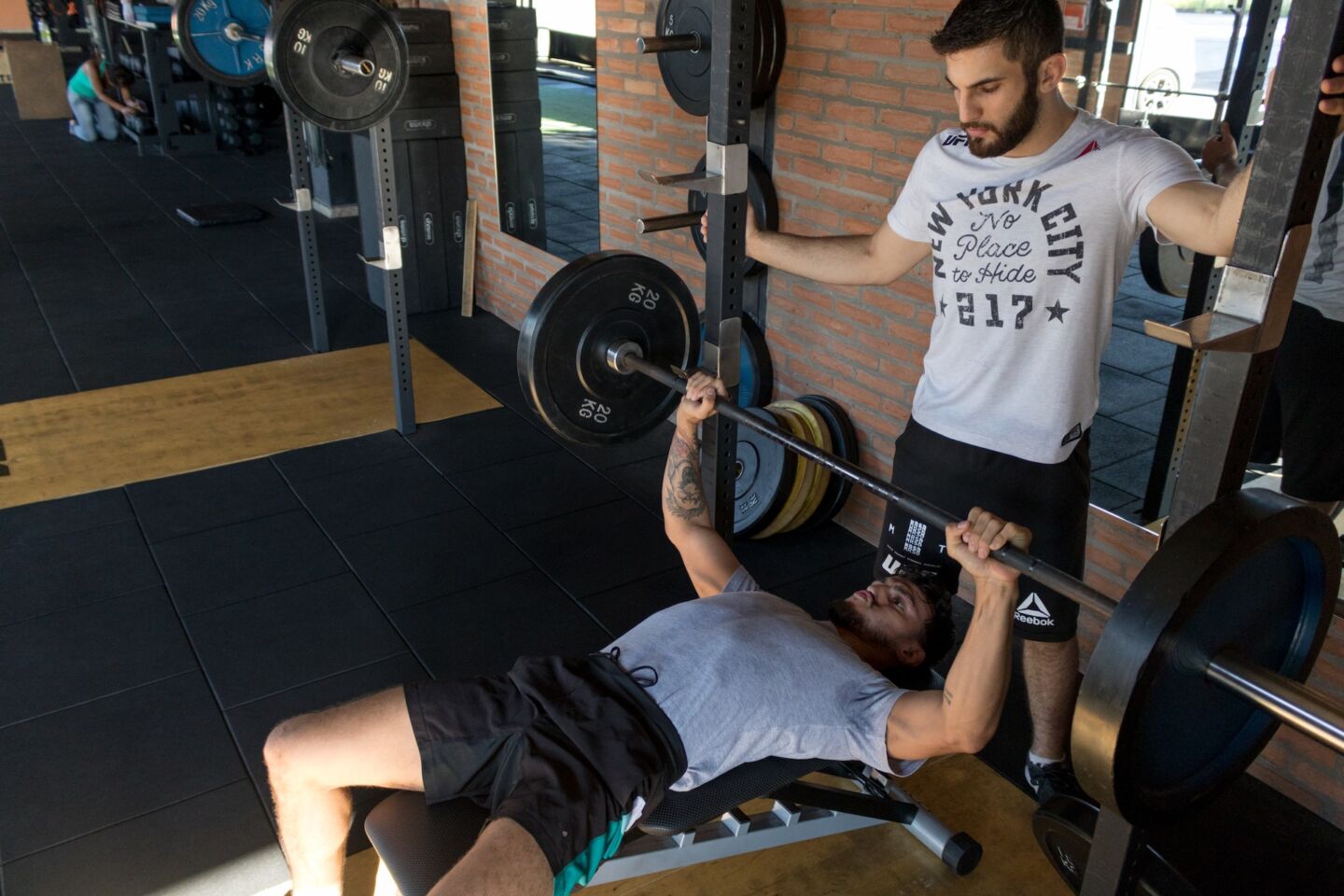
Photo by Bruno Bueno
Let’s talk about goal setting! It’s a crucial step in achieving those overall wellness objectives we all desire. The key is to approach it strategically, making sure your goals are specific, measurable, attainable, relevant, and time-bound. You want to break down your big aspirations into smaller, achievable targets. This way, you can track your progress effectively and celebrate those awesome milestones along the way.
Now, let’s not forget about the power of mindset. Cultivating a positive attitude towards your fitness journey is vital. It helps you overcome any obstacles that might pop up along the way. And guess what? Having an accountability partner can be a game-changer. They provide support, motivation, and guidance to keep you on track towards your goals.
We can’t ignore the fact that challenges will come knocking. But fear not! Mindfulness practises like meditation or journaling can be your secret weapons to manage stress levels and keep your mind sharp when faced with hurdles.
So, goal setting techniques are the real deal for achieving fitness greatness. Set those specific, measurable, attainable, relevant, and time-bound targets, and watch yourself soar. And don’t forget to embrace mindfulness practices and seek the support of an accountability partner. Now, it’s time to move on to the exciting world of nutrition for fitness purposes without sacrificing taste or satisfaction.
Nutrition in Fitness and Personal Training
Now let’s dig into the world of nutrition and personal training. If you want to optimise your physical performance and overall health, understanding the role of nutrition is key. It’s all about fueling your body with the right stuff.
First up, we have healthy meal planning. By planning nutritious meals throughout the day, you’re setting yourself up for success. Keep an eye on those macronutrients: protein, carbohydrates, and fats. They’re the building blocks you need to maintain muscle mass and keep your energy levels up. Oh, and don’t forget about pre and post-workout snacks! They’re like little power-ups that give you the fuel you need before and after exercise.
Hydration is another important piece of the puzzle. Drink water like it’s your job! Staying hydrated helps regulate your body temperature, keeps your joints lubricated, and helps transport all those awesome nutrients throughout your body.
Now, let’s talk about supplements. They can be a game-changer for some folks looking to level up their performance or speed up their recovery. But here’s the deal: always consult with a healthcare provider before diving into the supplement world. Safety first!
Here’s the bottom line: adopting healthy eating habits into your daily routine is a game-changer. Focus on nutrient-dense foods like lean proteins, whole grains, fruits, veggies, and healthy fats. Leave those processed foods high in sugar and saturated fat in the dust. By understanding how nutrition plays a role in your fitness journey, you’ll be well on your way to crushing those goals and achieving the results you desire.
Oh, and here’s a little secret: many good personal trainers will even put together your entire week’s meal plans as part of their service. They’ve got your back, so you can focus on showing up and getting your sweat on!
What is an Exercise Plan?
We all know that exercise is a key factor in achieving overall health and well-being. That’s where a personal trainer comes in to help create a workout plan that’s just right for you.
An exercise or personal training programme is all about tailoring your workouts to meet your unique needs and goals. It’s like a roadmap that guides you towards success. This plan should include a mix of cardio and strength training exercises to improve your heart health, build those muscles, boost endurance, and burn calories. How often, how long, and how intense your workouts should be will depend on your current fitness level and how close you are to reaching your goals. Tracking your progress regularly will help you see where you’re crushing it and where you might need to make some adjustments.
Now, let’s talk about spicing things up! Variety is the spice of life, and it’s also important in your workouts. Mixing up your exercises keeps things interesting, prevents boredom, and helps you target different muscle groups effectively. Your personal trainer can introduce new exercises or put a fun twist on the ones you already know and love. And hey, don’t forget to warm up those muscles before diving into intense workouts and cool down with some stretches afterward to prevent any unwanted injuries.
Finding the right balance between cardio and strength training is the secret sauce to achieving optimal results. Cardio exercises get your heart pumping and torch those calories, while strength training builds lean muscle mass and boosts your metabolism even when you’re not working out. It’s all about finding the sweet spot that suits your needs.
So, in a nutshell, combining a well-crafted exercise plan with some nutritional changes is the recipe for better overall health. Stick with it, stay committed, and watch those amazing results unfold.
Safety in Personal Training
In personal training, your well-being should always come first, no matter if you’re working with a trainer in person or following an online programme.
To ensure a safe workout, keep these tips in mind: First off, never underestimate the power of a proper warm-up. It might seem like a small step, but it’s crucial for preparing your body and reducing the risk of muscle strains or injuries. Don’t skip it! Also, be mindful of common workout mistakes like lifting weights that are too heavy or performing exercises with incorrect form. It’s important to listen to your body, work at your own pace, and seek guidance from a professional if needed. Last but not least, don’t forget to show your muscles some love by incorporating stretching exercises. Stretching helps keep your joints flexible and reduces the risk of injuries.
While it’s fantastic to work hard and push towards your fitness goals, always remember that exercising safely is just as important. By following these safety tips such as warming up properly, avoiding common workout mistakes, and incorporating stretching exercises, you can maintain optimal physical health while minimising the risk of exercise-related injuries.
In summary, safety should always be a top priority during personal training sessions, regardless of the type of fitness routine you follow. By taking the necessary precautions like warming up, using proper form, and incorporating stretching exercises, you can significantly reduce the likelihood of experiencing injuries. So, let’s prioritise safety and keep those workouts enjoyable, effective, and injury-free! Now, in the next section, we’ll dive into the importance of rest and recovery practices.
The Role of Rest and Recovery
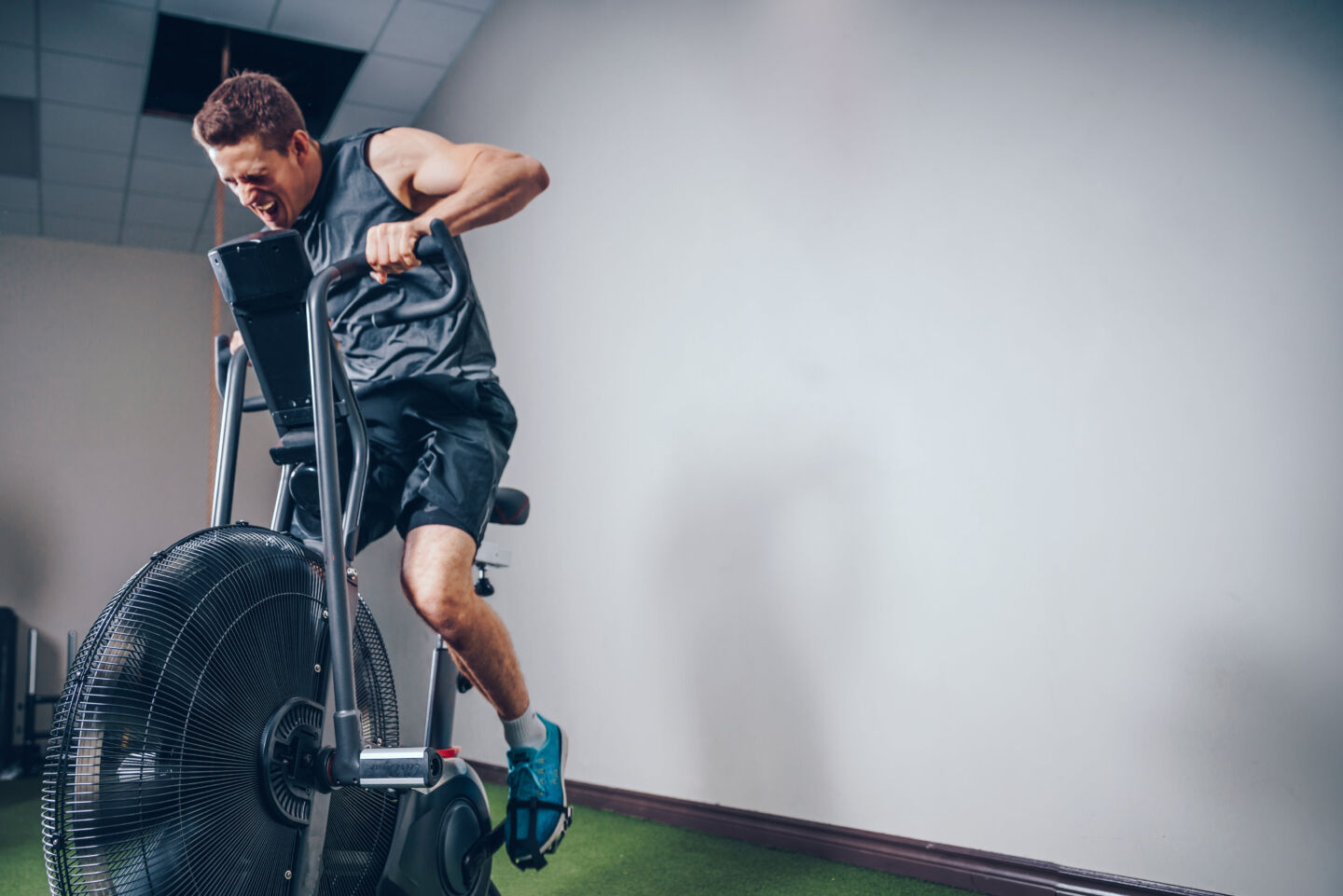
Photo by Shopify Photos from Burst
Did you know that how you recover is as important as how you train? Research has shown that giving your body adequate rest can have a significant impact on your performance and help reduce the risk of injuries by up to 50%. One key aspect of recovery is getting enough quality sleep, as it allows your body to regenerate and repair damaged muscles.
In addition to sleep, engaging in active recovery activities can also aid in the recovery process. Low-intensity exercises like walking or yoga have been shown to reduce muscle soreness and promote better blood flow to the muscles.
Proper nutrition is another crucial factor in supporting recovery. Personal trainers often recommend well-balanced meals that include complex carbohydrates, protein, healthy fats, fruits, and vegetables. This combination helps replenish glycogen stores and promote muscle protein synthesis, facilitating the recovery process.
It’s important to recognise the mind-body connection when it comes to rest and recovery. Mental stress can hinder physical progress, so incorporating activities that promote relaxation and alleviate stress is beneficial. Practices like meditation or breathing exercises can help restore the mind and promote a sense of calm.
Personal trainers understand the significance of rest and recovery and encourage their clients to prioritise self-care practices. This may involve taking time off between workouts and incorporating activities that support mental well-being. Remember, your journey towards optimal fitness is not just about pushing hard during workouts, but also about allowing yourself time to recover, rejuvenate, and find balance.
Personal Training and Mental Health
Personal training can give your mental health a serious boost. It’s not just about getting those gains in the gym; it’s also about giving your mind a good workout too.
First off, exercise in general is a fantastic way to improve your mental well-being, and personal training takes it to the next level. When you work with a personal trainer, you’re not just focusing on your physical fitness; you’re also working on your mental strength.
One of the big ways personal training helps with mental health is by reducing stress. Life can be pretty darn stressful, and sometimes it feels like there’s no escape. But when you engage in regular physical activity, your body releases those lovely endorphins that can turn your frown upside down. They’re like little mood-boosting warriors that fight off stress and leave you feeling happier and more relaxed.
Personal training also provides a sense of structure and routine, which can be super beneficial for your mental well-being. In a world full of chaos, having a set schedule and knowing that you have a dedicated time for your workouts can bring a sense of stability and control. It helps you stay organised and focused, and that can have a positive ripple effect on your overall mental state.
Let’s not forget about confidence! Personal training can do wonders for your self-esteem. As you work with your trainer and start seeing progress in your fitness journey, you’ll gain confidence in your abilities. You’ll start believing in yourself and your potential to tackle challenges, both inside and outside of the gym. Feeling strong physically often translates to feeling strong mentally too.
Last but not least, personal training can be a great way to combat those pesky negative thoughts. When you’re focused on your workout and pushing yourself to new limits, it’s hard for those negative voices in your head to stick around. Exercise helps clear your mind, boosts your mood, and improves your mental clarity. It’s like hitting the reset button on your brain and giving yourself a fresh start.
So, if you’re looking to boost your mental health, personal training is definitely worth considering. It’s not just about sculpting those muscles; it’s about giving your mind the TLC it deserves. From reducing stress to building confidence, personal training has got your back. Get ready to sweat, smile, and let those endorphins work their magic.
For more on this, see our Personal Training for Mental Health page.
The Role of Technology in Personal Training
The role of technology in personal training has brought about significant changes and advancements in the fitness industry. Virtual fitness has emerged as a popular option due to its convenience and accessibility. Through online coaching and virtual training sessions, individuals can work out with a trainer from the comfort of their own homes or any location of their choice. This flexibility in scheduling and location eliminates the need for physical proximity to a trainer and opens up a world of possibilities for fitness enthusiasts.
Wearable devices, such as FitBits and smartwatches, have also made a remarkable impact on personal training. These devices allow individuals to track their progress, monitor vital signs, and gather valuable data about their health and fitness. Fitness apps complement these devices by providing a platform for users to log their workouts, set goals, track their calorie intake, and receive personalised feedback based on their data. This integration of technology and fitness tracking empowers individuals to take control of their health and make informed decisions about their training.
Artificial intelligence (AI) is another aspect of technology that has the potential to change the training landscape, allowing people to easily and quickly create tailored workout plans that cater to an individual’s specific needs, goals, and preferences. However – big warning to anyone thinking of using and following an AI generated PT programme – remember that AI doesn’t know your own personal circumstances, such as your ability, fitness or injuries. Therefore, it could design a programme which is unsuitable or even dangerous for you. This is not to mention the fact that it frequently makes up facts and figures, so please please do fact check anything AI generated when it comes to fitness or health advice.
Additionally, online coaching has gained popularity since Covid. Video conferencing platforms like Zoom or Skype enable clients to connect with their trainers for one-on-one sessions or participate in small group classes. Online coaching offers support, guidance, and accountability, while overcoming geographical barriers, but it is lacking in some areas – more on this below.
Online Personal Training
As mentioned above, online PT has become popular in recent years. With online personal training, individuals have the flexibility to schedule their workouts at their preferred time and location, whether it’s in the comfort of their own home or while travelling. This eliminates the need to commute to a gym or adhere to specific training hours, making it ideal for individuals with busy schedules.
Affordability is another significant advantage of online personal training. In many cases, the cost of online training is lower compared to traditional in-person sessions. This makes it a more cost-effective option for those who may have budget constraints but still desire personalised guidance and support from a professional trainer.
Accessibility is a major benefit of working with an online personal trainer. Regardless of geographical location, individuals can access highly qualified trainers from around the world. This opens up a broader pool of trainers to choose from, allowing individuals to find someone who aligns with their goals, preferences, and training style.
In conclusion, online personal training offers convenience, affordability, and accessibility, making it an attractive option for many individuals.
Online Personal Training vs In-Person Training
While virtual training offers many advantages, it does have some drawbacks compared to traditional in-person training. One potential downside is that it can be more challenging for trainers to assess form and technique accurately without physically being present. Additionally, there may be limitations on available equipment or space when working out at home.
In-person personal training offers numerous advantages over its online counterpart. Firstly, as mentioned above, having a trainer physically present allows for real-time feedback, corrections, and adjustments, ensuring proper form and technique to maximise results and prevent injuries. Trainers can observe and provide immediate guidance, tailor exercises to individual needs, and create a more personalised and dynamic workout experience. What’s more, the gym environment itself provides access to a wide range of specialised equipment and resources, allowing more diverse and comprehensive training programmes.
What Types of Exercise Will I Do In Personal Training Sessions?
Alright, let’s dive into the exciting world of personal training sessions and find out what you’ll be getting yourself into! When you sign up for personal training, get ready to experience a wide range of workouts that will have you breaking a sweat and feeling fantastic. From cardio to strength training, and everything in between, personal trainers know how to keep things fun and effective. So, grab your workout gear and get ready to explore the different exercises that will help you reach your fitness goals.
Cardiovascular Training
Cardio training is like the MVP of any solid fitness plan. It’s all about getting that heart pumping, boosting endurance, and keeping those muscles strong. Think of it as the ultimate multitasker! Activities like running, cycling, or swimming get that oxygen flowing to your muscles, and they give your heart some serious love. Check out these perks of cardio training:
Reduces the risk of chronic diseases: Regular aerobic exercise can lower blood pressure, reduce cholesterol levels, and decrease the risk of developing type 2 diabetes.
Improves endurance: Engaging in cardiovascular activities builds up stamina and enhances your ability to perform physical activities for an extended period without feeling fatigued.
Enhances mental well-being: Cardio workouts release endorphins that promote a positive mood and reduce stress levels.
Boosts weight loss: Combining cardio with a healthy diet can help burn calories more efficiently and aid in achieving weight loss goals.
Offers variety in workouts: There are many types of cardio exercises available that provide different levels of intensity and challenges.
In the next section, get ready to dive into the world of strength training. It’s the perfect complement to your cardio adventures and will take your fitness journey to new heights. So grab those dumbbells and get ready to unleash your inner powerhouse!
Strength Training
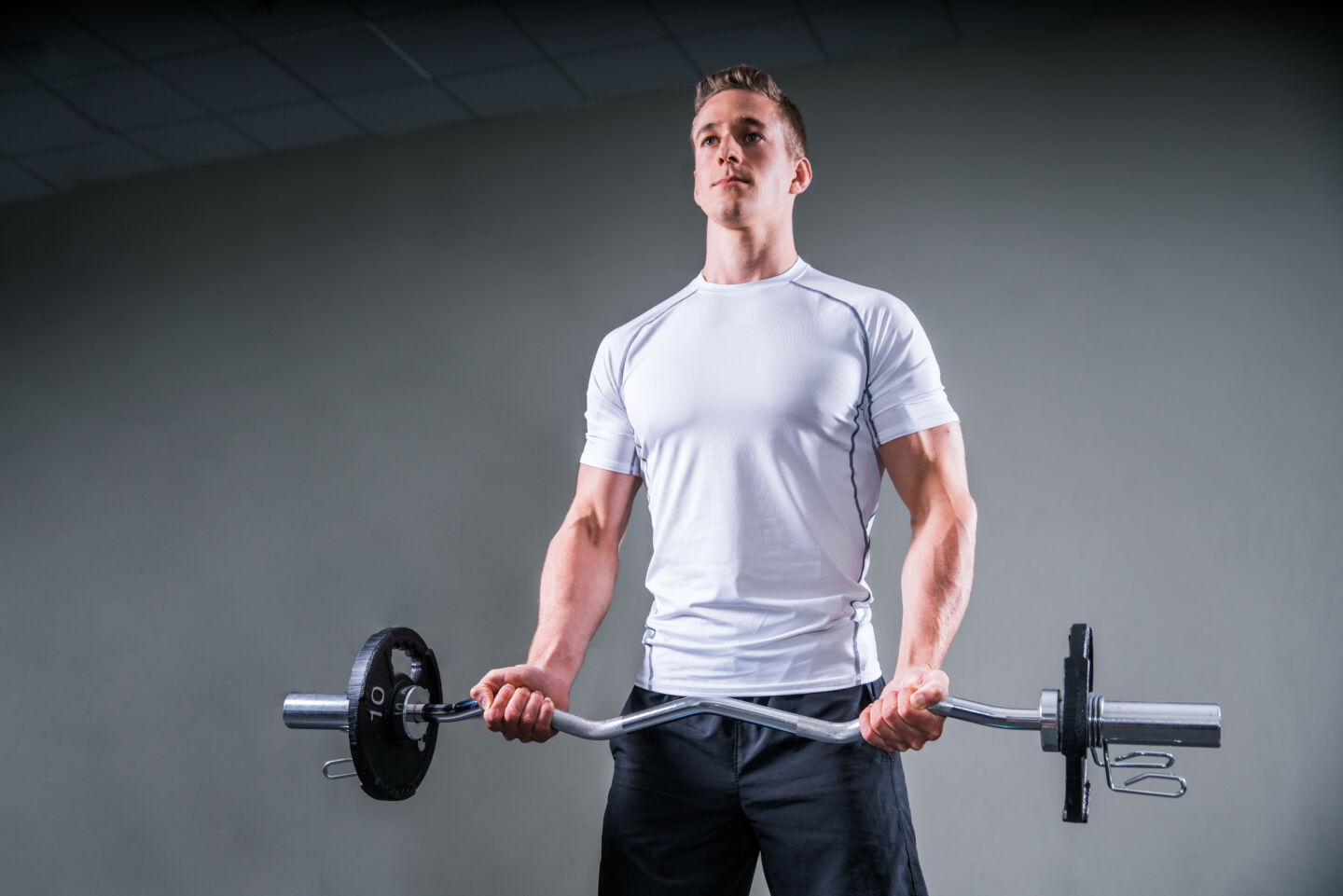
Photo by Shopify Photos from Burst
Let’s dive into the world of strength training, where muscles get pumped, strength gets built, and bodies transform. If you’re looking to pack on some serious muscle mass, boost your strength and power, and rock an impressive physique, this is the way to go. Get ready to feel the burn!
Strength training is all about resistance – using weights, bands, or even just your own bodyweight to challenge those muscles. It’s like putting them through a tough workout boot camp. You’ve got different techniques to choose from, like compound exercises that work multiple muscles at once, such as squats and deadlifts, or isolation exercises that target specific muscles, like bicep curls. It’s all about finding what works best for you and your goals.
When it comes to powerlifting, heavy lifting with low repetitions is the name of the game. You’re pushing your limits, testing your strength, and aiming for those impressive feats of power. On the other hand, strength and conditioning programmes focus on higher repetition ranges with lighter weights, giving you that endurance and overall fitness boost. Your personal trainer will be your guide, crafting a programme tailored specifically to your goals and fitness level.
But hey, let’s not forget about the perks of strength training. It’s not just about looking swole – although that’s a nice bonus. By incorporating strength training into your routine, you’re revving up your metabolism, improving bone density, lowering the risk of injury, perfecting that posture, and finding your balance. Plus, if you’re aiming for a very toned physique, building muscle while shedding body fat, strength training is your secret weapon.
Remember, balance is key. Strength training is an essential part of any well-rounded exercise routine, but you’ve got to mix it up with some cardio and flexibility training to reap all the health benefits. And hey, don’t forget about that core – it’s the key to proper posture alignment during exercise movements. We’ll explore that next, so get ready to unleash your inner powerhouse!
Posture and Core Training
Alright, let’s talk about the importance of maintaining good posture and engaging those core muscles during your workouts. It’s time to unleash your inner superhero and build a rock-solid foundation for your body!
When we talk about core strengthening, we’re talking about those fabulous abs and the muscles in your back that work together to stabilise your spine during movement. These muscles are like the body’s natural support system, keeping everything in check. So, when you’re hitting the gym, don’t forget to give some love to your core.
Stability training is where it’s at. It’s all about building up that core strength to improve your balance and coordination. By engaging those muscles, you’re enhancing your body awareness and control, reducing the risk of falls and injuries. It’s like adding an extra layer of power to your workouts!
And let’s not forget about those abdominal workouts. They’re the bread and butter of any fitness programme. Strengthening those core muscles not only gives you killer abs but also improves your posture, stability, and mobility. It’s like building a strong fortress to support your body in all its glory.
We can’t leave the back out of the equation. Back strengthening exercises are just as important. They support that spine of yours, improve your posture, and kick back pain to the curb. Deadlifts, rows, extensions – they’re all part of the back-building goodness that targets those specific muscle groups.
By incorporating regular core strengthening exercises into your routine, you’re unlocking a whole new level of physical performance. Say goodbye to those pesky injuries, hello to enhanced balance and stability, and wave goodbye to that nagging pain. It’s all about finding your inner strength and perfecting your posture.
Next we’re about to stretch it out and dive into the world of flexibility and mobility training. It’s time to give those muscles some TLC while keeping things safe and effective.
Flexibility and Mobility Training
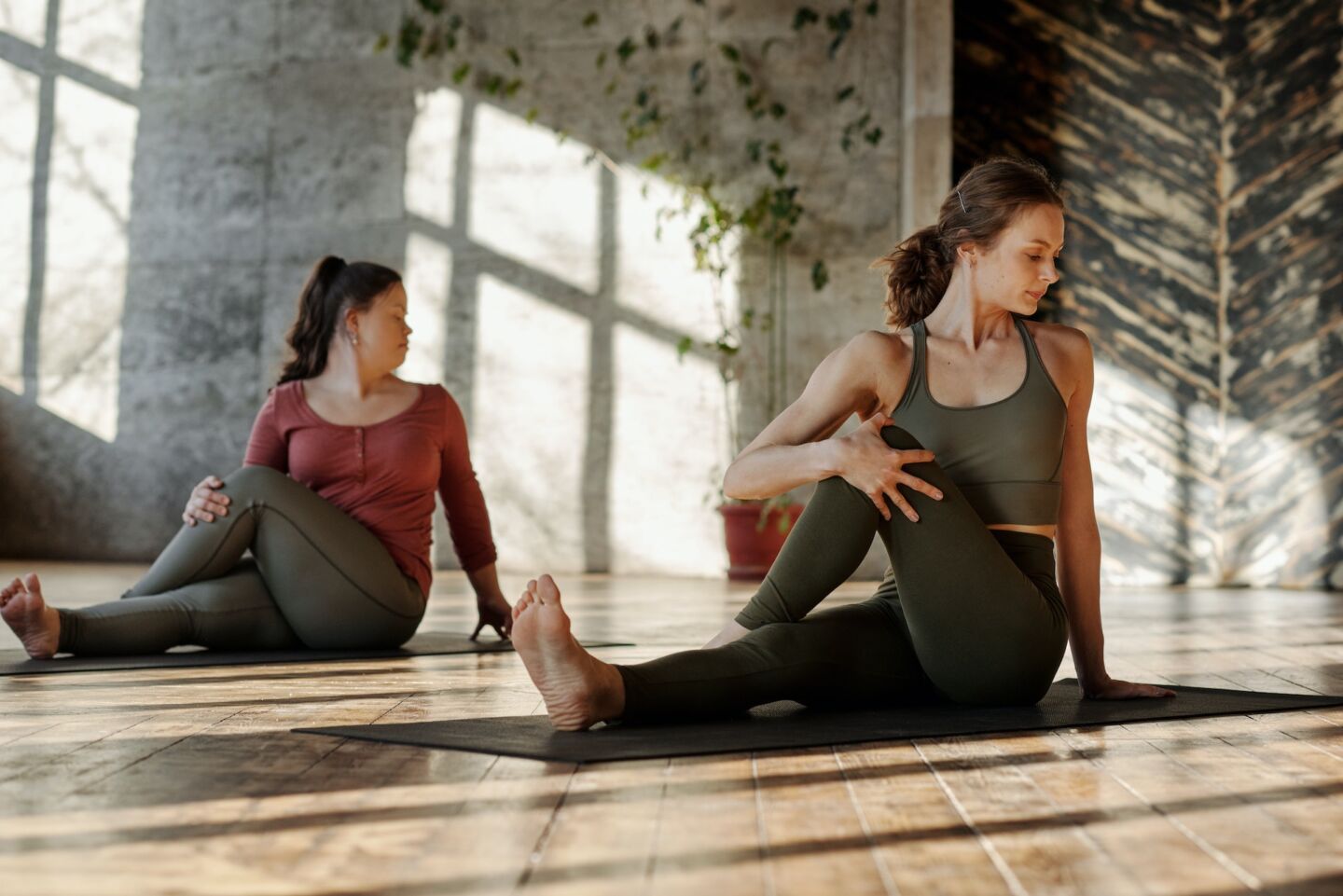
Photo by Cliff Booth
Alright, let’s talk about the importance of adding some flexibility and mobility training to your fitness routine. It’s time to loosen up those muscles, increase your range of motion, and unleash your inner yoga guru!
When we talk about mobility, we’re talking about getting those joints moving like well-oiled machines. Mobility exercises focus on improving the range of motion in your joints, giving you the freedom to move with ease and grace. Think of it as greasing the hinges on a door – smooth and effortless.
And let’s not forget about flexibility. This is all about lengthening those muscles, making them supple and elastic. Stretching routines are like giving your muscles a big ol’ stretchy hug, increasing your flexibility and making you feel all limber and free.
Yoga is a fantastic way to improve both flexibility and mobility. Not only does it help you achieve those bendy poses, but it also does wonders for your mental well-being. It’s like a two-for-one deal – flexibility for your body and a little zen for your soul.
The benefits of incorporating flexibility and mobility training into your routine are plentiful. Picture this: improved athletic performance, less muscle soreness after workouts, increased blood flow to those hard-working muscles, better posture and balance control, and a reduced risk of injuries during physical activities or just going about your daily life. It’s like giving your body a well-deserved treat!
So, folks, make sure you add some flexibility and mobility exercises to your workouts. It’s the secret ingredient to levelling up your fitness game, achieving better posture, reducing the risk of injuries, and moving with grace and ease. Get ready for the next section, where we’ll tackle the art of balance training.
Balance Training
Alright, it’s time to find your balance! We’ve covered flexibility, mobility, and now it’s time to dive into the world of balance training. Get ready to strengthen those stabiliser muscles and unleash your inner acrobat.
Balance training is all about improving your stability and finding your centre of gravity. It’s like walking on a tightrope, but without the actual danger. Whether you’re in your golden years, an athlete looking to up your game, or simply someone who wants to level up their fitness, balance training is useful for you.
So, how does it work? Well, you can use some fancy equipment like stability balls, wobble boards, or resistance bands. These tools challenge you in different positions and difficulty levels, giving your body a run for its money. But don’t worry, you can also do balance exercises without any equipment at all. It’s all about finding your centre of gravity and challenging those stabiliser muscles.
Now, let’s talk benefits. When you incorporate balance training into your routine, you’ll experience improved posture and coordination. Say goodbye to slouching and hello to a more elegant and poised you. Your core strength will skyrocket, giving you the stability of a ninja. You’ll also enhance joint stability and flexibility, making those movements smooth as butter. And the best part? You’ll reduce the risk of injuries and move through your daily activities with grace and ease.
For the over 60’s or 70’s out there, balance training is crucial for maintaining independence and reducing the likelihood of falls. It’s all about those simple exercises, like standing on one leg or walking heel-to-toe, that can make a world of difference. And for you athletes, balance exercises will take your performance to new heights. From dancers to gymnasts, having precise body control during dynamic movements is key, and balance training will help you achieve just that.
When it comes to selecting equipment or designing routines for specific populations, like seniors or athletes, a personal trainer can be your guiding light. They’ll help you identify the best options and create a customised plan just for you. But if you’re just starting out, fear not! You can practise basic exercises like standing on one foot or doing lunges on solid ground. It’s all about starting small and building up from there.
So, balance training is the secret sauce to enhancing your overall stability, coordination, and confidence. Get ready to conquer the world, one stable step at a time. And in the next section, we’ll explore the world of high-intensity interval training (HIIT), where we’ll get your heart pumping and those calories burning. Get ready to sweat!
High-Intensity Interval Training
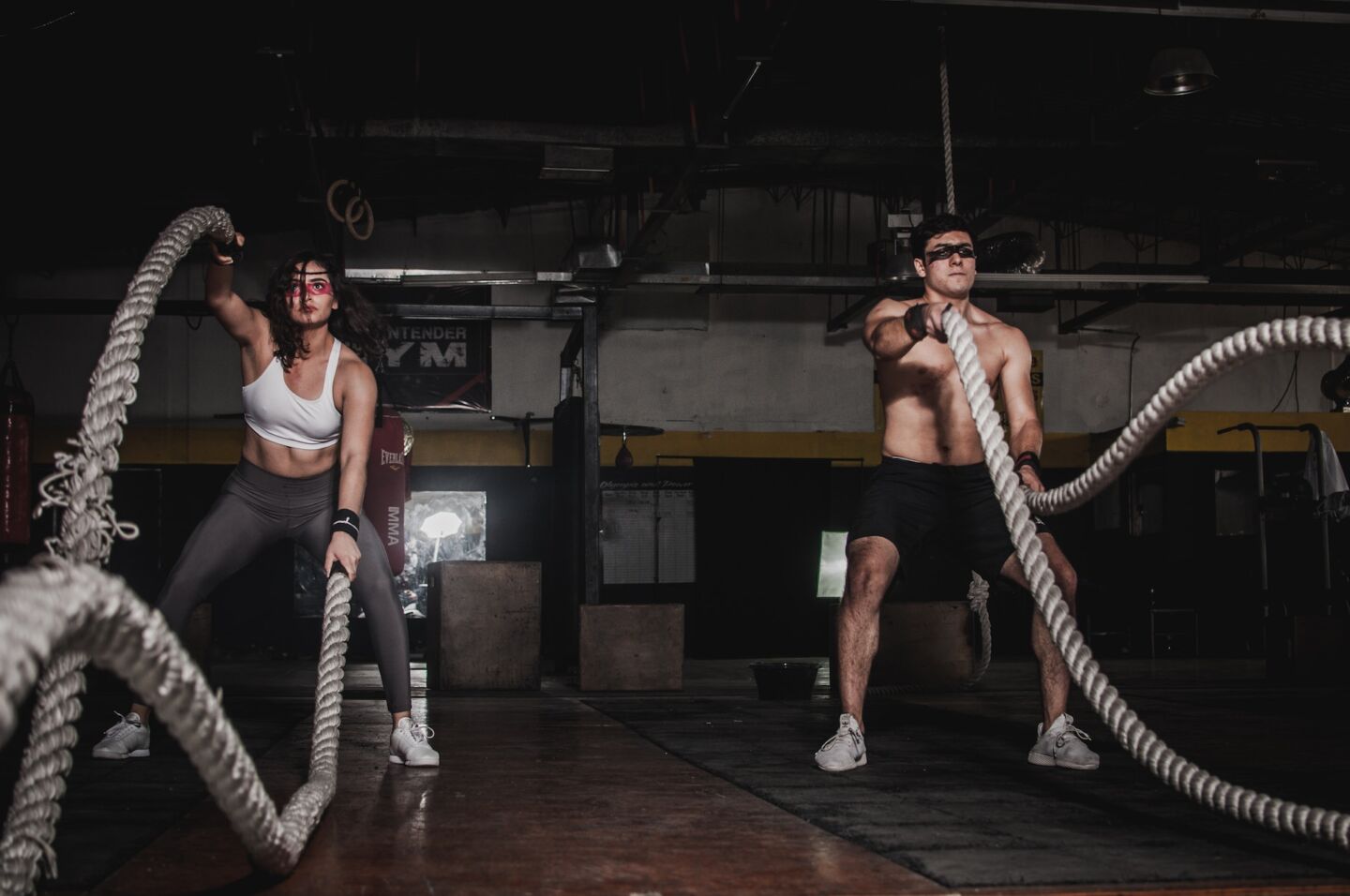
Photo by Leon Ardho
Get ready to unleash the power of High-Intensity Interval Training, or as we cool kids call it, HIIT! This fitness phenomenon is all the rage, and for a good reason. HIIT is like a turbo boost for your workouts, helping you achieve your fitness goals in no time.
It’s all about short bursts of intense exercise followed by quick rest periods. We’re talking high-octane moves that’ll leave you breathless, but don’t worry, we’ll give you a chance to catch your breath too. This dynamic combo of intensity and recovery is what makes HIIT so effective.
The benefits of HIIT are off the charts. It’s like a supercharger for your heart, boosting cardiovascular health and improving oxygen consumption. Your metabolic rate will skyrocket, turning you into a calorie-burning machine. And let’s not forget about reducing insulin resistance, keeping those blood sugar levels in check.
At Nxtep we like to incorporate HIIT into most people’s personal training programmes. Your trainer will craft a workout that’s tailored to your needs and goals, whether you want to sculpt those abs or conquer a marathon, HIIT can be customised to target specific areas of your body or overall fitness objectives.
Now, let’s talk exercises. We’ve got some HIIT gems that’ll make you sweat bullets and feel like a champ. Picture yourself doing burpees, mountain climbers, jump squats, and high knees. These explosive moves will take your fitness game to the next level. And the best part? You can do them in one-on-one sessions with your trainer or join a small group class for some extra motivation and high-fives.
But how does HIIT stack up against steady state cardio, you ask? Well, studies have shown that HIIT may have the upper hand when it comes to improving aerobic capacity and reducing body fat percentage. With HIIT, you’ll achieve the same results in less time. Having said that, we believe there’s a time and a place for both, and we incorporate both into our training programmes.
Plyometric Training
Plyometric training is all about those quick and powerful muscle contractions that give you that explosive edge. We’re talking jumps, hops, bounds, and skips that will make you feel like you have springs in your shoes. The goal here is to generate a whole lot of force in a short amount of time, and boy, does it deliver.
The secret behind plyometrics lies in the stretch-shortening cycle. It’s like a power-packed energy transfer in your muscles. During the eccentric phase, your muscles stretch like a slingshot, storing up all that energy. And then, in the concentric phase, that energy is released, propelling you forward with more power.
Plyometric training is a game-changer for athletes. It’s like adding a turbo boost to your performance. If you want to run faster, jump higher, and change direction like a ninja, plyometrics is your secret weapon. Studies have shown that athletes who incorporate plyometrics into their training programmes experience improvements in running speed, agility, vertical jump height, and overall change-of-direction ability. It’s like levelling up your athleticism in record time.
But, plyometrics isn’t just for athletes. Even if you’re not aiming for the gold medal, plyometric training can still work wonders for your general fitness. It’s a low-impact option compared to other high-intensity exercises like sprinting or heavy weightlifting. Plus, it’s a total body workout that engages multiple muscle groups, giving you a full-body burn.
However, plyometrics is no joke. It’s intense, and it’s important to approach it with caution. Before you start bouncing around like a kangaroo, make sure you have a solid foundation of strength. It’s crucial to work with a qualified coach or personal trainer who knows their stuff and can guide you through proper technique and progressions. Safety first!
In a nutshell, plyometric training is the holy grail of explosive movements. It’s all about harnessing that stretch-shortening cycle to unlock your true athletic potential. Whether you’re an athlete looking to dominate the field or someone seeking to take their fitness to the next level, plyometrics is your ticket to success.
Circuit Training
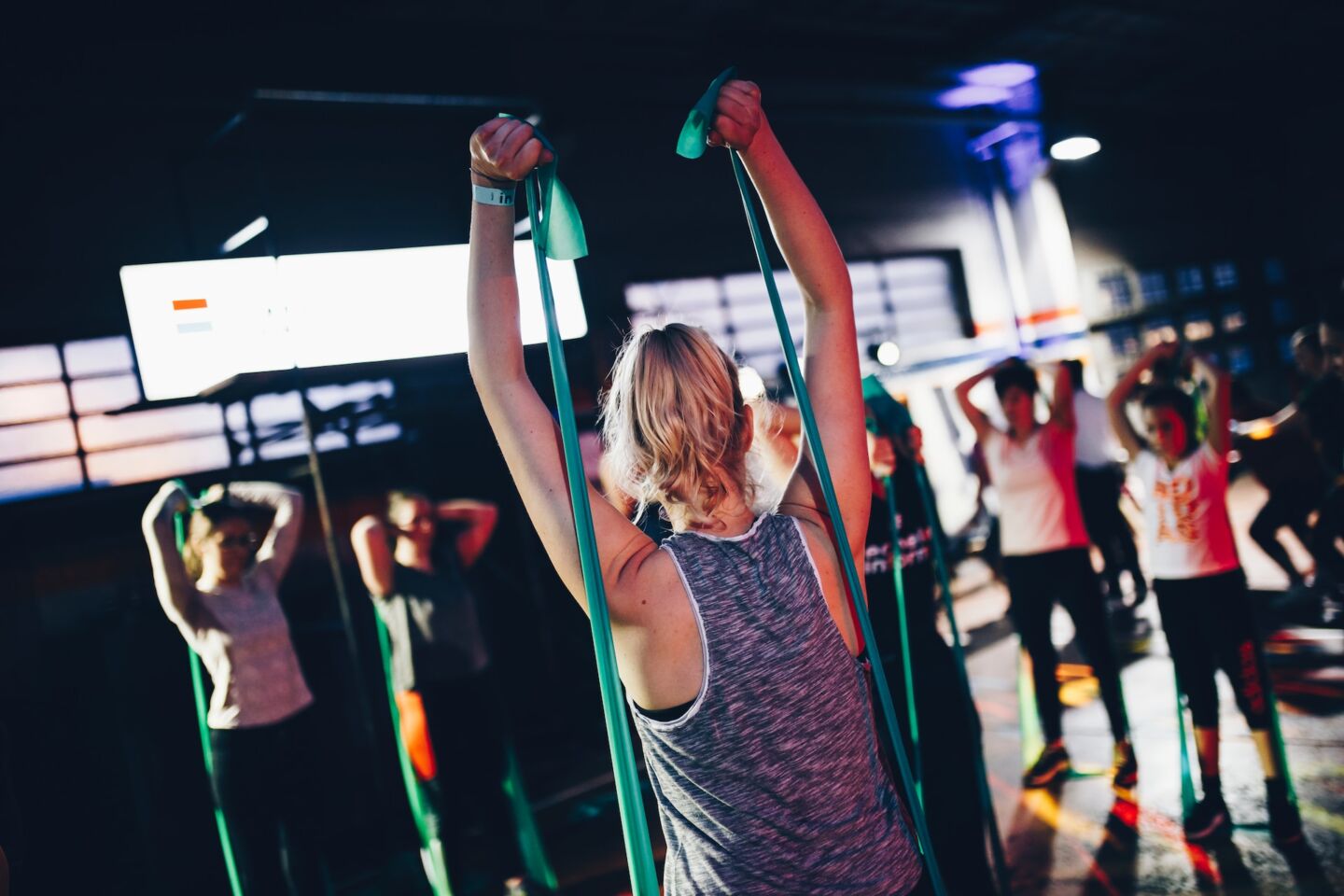
Photo by Geert Pieters on Unsplash
Get ready for the ultimate workout buffet with circuit training! This dynamic and time-efficient approach is designed to target different muscle groups while giving you a full-body burn. It’s like getting the best of both worlds in one power-packed session.
Circuit training is all about mixing things up and keeping your body guessing. You’ll perform a series of exercises in a sequence, with minimal rest between sets. It’s a fast-paced, high-energy affair that will get your heart pumping and your muscles working hard. And the best part? You can customise it to fit your goals and fitness level.
Circuit training is not just a fun and diverse way to work out—it’s also packed with benefits. First and foremost, it’s fantastic for improving cardiovascular health. With those short rest periods and constant movement, your heart will be pumping, and your lungs will be working overtime. It’s like a cardio party that keeps your ticker in tip-top shape.
But that’s not all. Circuit training also boosts muscular endurance, helping you build strength and stamina. By challenging your muscles with a variety of exercises, you’ll see improvements in your overall strength gains. And if weight loss is on your agenda, circuit training is a winner. It’s a calorie-burning powerhouse that torches fat while toning your muscles. Plus, the afterburn effect keeps your metabolism revved up even after the workout is done.
What’s the Difference Between HIIT and Circuit Training?
Circuit training follows a set sequence of exercises, hitting different muscles one after the other. It’s like a well-choreographed dance routine. HIIT, on the other hand, is all about pushing yourself to the max during intense intervals and then catching your breath. It’s like a roller coaster ride for your heart rate.
Intensity and duration-wise, HIIT is all about going all-in during those short bursts of exercise. It’s like a sprint where you give it your all. Circuit training can be intense too, but it might not require you to go all-out like HIIT. Plus, circuit sessions can last a bit longer since you’re moving through different exercises.
In terms of focus, circuit training is fantastic for overall strength, endurance, and cardio fitness. It’s like an all-around workout that hits different muscle groups. HIIT, on the other hand, hones in on cardio fitness and torching calories. It’s like a fat-burning machine that revs up your metabolism.
Both circuit training and HIIT have their perks. Circuit training is great if you want variety and a full-body challenge. HIIT is perfect if you’re craving a hardcore cardio workout that gets you sweating in no time.
So, whether you choose circuit training or HIIT, it’s all about finding what floats your boat. Better yet, why not try a mix of both? That way, you get the best of both worlds. Talk to a personal trainer to figure out which option suits you best.
Functional Training
Functional training is a fantastic exercise approach that focuses on building the strength and mobility needed for everyday activities. It’s all about using movements that mimic real-life actions to improve your body’s ability to handle daily tasks with ease. Unlike traditional weightlifting, functional training takes a practical and holistic approach to fitness.
The benefits of functional training are outstanding. It helps increase strength, flexibility, balance, coordination, and endurance, giving you a well-rounded fitness level. By incorporating functional movements into your workout routine, you can reduce the risk of injuries caused by imbalances or weaknesses in specific muscle groups. It’s all about preparing your body for the challenges you face in your everyday life.
When it comes to techniques, functional training has got you covered. You’ll be doing exercises like squats, lunges, deadlifts, planks, push-ups, pull-ups, and bodyweight movements like burpees and mountain climbers. These exercises engage multiple muscle groups simultaneously and help you develop functional strength that you can apply in various situations.
Functional training sets itself apart from traditional gym workouts that mainly focus on building muscle mass or isolating specific muscles using machines or free weights. It takes a more practical approach by incorporating movements that work different muscle groups together, simulating the activities you encounter in your daily life. This type of training is highly customizable based on your individual needs and goals, allowing personal trainers to tailor workouts to fit your specific requirements. They might introduce equipment like kettlebells, medicine balls, resistance bands, or suspension trainers like TRX straps to challenge you at different levels of difficulty.
For elderly people, functional training is especially beneficial. It helps them maintain their independence by improving balance, coordination, and stability, reducing the risk of falls. Exercises designed for seniors focus on low-impact movements that prioritise stability over heavy lifting, ensuring their safety and well-being.
Functional training also has its place in specific athletic activities. By incorporating movements that mimic the requirements of a particular sport, athletes can enhance their performance through consistent practise and conditioning. It’s all about improving their overall functional strength, coordination, and movement patterns specific to their chosen sport.
So whether you’re aiming for a more practical and functional approach to fitness or you want to excel in your athletic pursuits, functional training has you covered. It offers a diverse range of exercises that target different muscle groups and help you develop strength, mobility, and coordination that will benefit you in your everyday life. Get ready to take on the world with functional training!
Sports-Specific Training

Photo by Andrea Piacquadio
Sports-specific training is specific training for athletes and amateur sportspeople, designed to take their performance in their sport to the next level. It’s all about honing in on those specific movements and muscle groups that are crucial for success in their activity. This type of training pulls out all the stops with sports-specific exercises, athletic training techniques, cross-training methods, and workouts that supercharge performance. The result? Athletes build up strength, endurance, agility, speed, and flexibility—everything they need to dominate their sport. And hey, research has even shown that athletes who embrace sports-specific training have a leg up on the competition.
So, how does it work? Athletes get to focus on event-specific preparation. Personal training for runners helps them in perfecting their stride length and cadence to become an efficiency machine on the track. Personal training for swimmers focuses on building up upper body strength to unleash powerful strokes in the water. Sports-specific training tailors the workouts to the demands of the sport, giving athletes the edge they need.
But it’s not just about performance. Sports-specific training also does wonders for injury prevention. By targeting those muscles and movements that are prone to overuse or repetitive stress, athletes can dodge the injury bullet.
Here’s another cool perk: sports-specific training shakes things up by incorporating cross-training. It’s like adding a secret ingredient to the mix. By diversifying the exercises and hitting different muscle groups that aren’t typically used in the athlete’s primary sport, it helps prevent burnout, keeps things interesting, and boosts overall fitness levels. And if you’re an athlete looking for that extra boost, performance-enhancing workouts like plyometrics and speed drills are your go-to moves.
So there you have it. Sports-specific training is the real deal for athletes who want to dominate their sport. It’s all about focusing on those specific movements, targeting muscle groups, and unleashing your full potential.
For more on specific sports training, see our other pages such as Personal Training for Bodybuilding, Personal Training for Cycling,
Injury Prevention and Rehabilitation Training
Injury prevention is all about staying one step ahead. We want to identify those potential risk factors that could spell trouble and then develop strategies to tackle them head-on. Think of it as a game plan to keep injuries at bay. Some key methods for injury prevention include proper warm-up and cool-down routines, using the right equipment for the job, maintaining good posture during exercises, and gradually building up intensity over time. Oh, and let’s not forget about corrective exercises. They’re like the secret weapon for addressing muscle imbalances and weaknesses that could potentially lead to injuries.
But what if an injury does happen? That’s where rehabilitation training steps in. It’s all about bouncing back stronger than ever. Rehabilitation techniques are designed to help individuals recover from injuries or surgeries by rebuilding strength, improving flexibility, and regaining their full range of motion. It’s like hitting the reset button and getting back on track.
Recovery strategies are also crucial for preventing injuries. After a gruelling workout or when recovering from an injury, the body needs some TLC. Stretching exercises, foam rolling, massage therapy, ice baths—you name it, they all play a role in promoting active recovery. By incorporating these techniques into a fitness programme and working closely with a qualified personal trainer, individuals can minimise the risk of injuries while maximising their overall health and well-being.
So, here’s the bottom line: injury prevention and rehabilitation training should be a top priority for anyone serious about physical activity. Working with a knowledgeable personal trainer who understands the ins and outs of these techniques is key. They can tailor a fitness programme to your specific needs and goals, integrating injury prevention strategies and rehabilitation exercises seamlessly. That way, you can achieve outstanding results while staying injury-free and feeling your best.
If you’ve got a niggling injury, or if you’re a sports person who needs to recover from something ASAP, give us a call or fill out our contact form and we’ll design a short term programme to help you get back in shape super fast.
How to Become A Personal Trainer
Do personal trainers need qualifications?
Yes, personal trainers need to have proper qualifications and certifications to ensure they have the necessary skills and knowledge to train clients safely and effectively. To become a certified personal trainer in the UK, you’ll need two qualifications, a Level 2 Fitness Instructor Qualification and a Level 3 Personal Training Qualification. The most efficient and cost-effective way to get qualified is with a Personal Training Diploma, which combines both of the above certifications.
It’s important to make sure your qualifications are approved by Ofqual, the government body that regulates vocational qualifications in England. This ensures that a Level 3 Personal Trainer course provides the same quality of training regardless of which training provider you choose.
When it comes to the fitness sector, CIMSPA is the main UK professional regulatory body. If you’re looking to become a personal trainer, getting a CIMSPA accredited qualification from a CIMSPA endorsed training provider should be at the top of your list.
Now, here’s a pro tip for you: before you go diving headfirst into any Personal Trainer course, do yourself a favour and check if the provider is a CIMSPA Training Provider Partner. Trust me, it’s a big deal. Many gyms and leisure facilities in the UK are picky about who they work with, and they prefer those approved by CIMSPA. So choose wisely.
Getting qualified to become a personal trainer in the UK doesn’t have to be difficult or expensive. With the right qualifications, you’ll be ready to start helping clients reach their fitness goals!
Is personal training certification worth it?
Absolutely! Getting certified as a personal trainer is definitely worth it. It’s a stamp of approval that shows you have the expertise and know-how to provide effective and safe training to your clients. It’s not just a piece of paper; it’s a symbol of your dedication to your profession.
Having a certification adds credibility to your name. Clients feel more confident knowing that they are working with a trained professional who has met certain standards.
So, go ahead and take that leap. Get certified, show the world what you’re capable of, and embark on a fulfilling career as a personal trainer. Just remember to choose a reputable certification, keep learning, and always strive for excellence.
How long does it take to get personal training certified?
The time it takes to become a certified personal trainer can vary depending on the specific programme you choose and how much time you can dedicate to studying. Some programmes offer speedy options that you can wrap up in just a few weeks, while others are more comprehensive and may take a few months to complete.
Your own availability and study pace also play a role in the duration of the programme. If you have the flexibility to put in more hours each day or week for studying, you might be able to sprint through the programme at a quicker pace. But if you’ve got a jam-packed schedule or other commitments, it might take you a bit longer to reach the finish line.
Remember that the certification process usually involves a mix of studying course materials, completing assignments or exams, and sometimes even hands-on training or internships. The specific requirements and structure of the programme will affect how long it takes.
Before jumping into a certification programme, take the time to research and compare different options. Look into the curriculum, prerequisites, study materials, and any additional requirements. Also, think about your own schedule and availability to find a programme that fits your needs and timeline.
In the end, the time it takes to get certified as a personal trainer is flexible and can be tailored to your own circumstances. Find a programme that works for you, put in the dedicated time and effort to study, and soon enough, you’ll be on your way to becoming a certified personal trainer!
Do personal training certifications expire?
Yes, personal training certifications don’t last forever. They usually come with an expiration date, and you have to keep up with your education to maintain that certification. It’s all about staying in the loop with the latest fitness trends and making sure you’re up-to-date. So, if you want to keep rocking as a certified personal trainer, keep on learning and evolving with the fitness world!
How much do personal training certifications cost?
Personal trainer certification fees can definitely vary hugely depending on the certifying body and the level of certification you’re aiming for. It’s like going shopping, you’ve got to do your research and compare different options to find the best fit for your needs. Take your time to study and analyse the certification alternatives out there, consider factors like curriculum, reputation, and of course, the cost. It’s all about finding that perfect match that ticks all the boxes for you. So, get out there, do your homework, and find the certification that suits you best!
Payment Plans
Look for suppliers who do not require you to pay the entire course fee up front. Several will let you spread your payments out over time. Some course providers will also give you 0% interest free credit choices; this is obviously conditional on your credit history, but it may be an option if money is truly tight. Some courses also allow you to pay a deposit and then pay the remainder later.
Funding from the Government
Some course providers do provide access to government funds through the Skills Funding Agency and Ofsted. To qualify for government support, you must be at least 19 years old and a UK citizen. This loan is not based on your household income, and there is no credit check. You will also have to pay back 9% of your wages until you earn more than £21,000. The government’s goal with the loan is to assist you in obtaining the necessary qualifications to further your profession.
Does a Personal Trainer Need a Degree?
While it’s not always necessary to have a degree to become a personal trainer, a lot of trainers out there choose to up their game by getting a degree or certification in a related field. Think exercise science, or sports medicine. It’s all about levelling up that knowledge and skillset.
Having a degree can give you a leg up in the game, especially if you’re in a competitive market. Some gyms and fitness centres *might* require personal trainers to have a degree or certification in a related field before they can join the team, but it’s not common.
So, while it’s not always a must-have, having a degree can make your life as a personal trainer easier. It opens doors and shows off your dedication to the craft. Keep that in mind as you navigate your personal training journey.
Legal Considerations for Personal Trainers
Does a Personal Trainer Need Insurance?

Photo by Tingey Injury Law Firm on Unsplash
Absolutely, personal trainers should definitely have insurance in their corner, and specifically liability insurance. It’s a safety net that protects trainers from potential claims made by clients who get injured during training sessions. Accidents happen, and having that insurance is essential to back you up.
Liability insurance is designed to cover the costs of legal fees and compensation claims if a client decides to go down that rocky road. It’s all about keeping you and your hard-earned cash protected. So, do yourself a favour and make sure you’ve got that insurance policy locked and loaded. It’s a small price to pay for big peace of mind.
Does a Personal Trainer Need a Business Licence?
If you’re running a personal training business, then yes, you will need to register as a business, even if that’s as a sole trader. The specifics of obtaining a business licence can vary from place to place. You’ll want to do a little detective work and check in with your local government or council to find out what’s required in your neck of the woods. They’ll give you the lowdown on the nitty-gritty details and guide you through the process.
Data protection and privacy laws
When it comes to handling client information, data protection and privacy laws can be a minefield. It’s essential to keep things on the up and up and make sure you’re compliant with these regulations.
First things first, you’ll want to obtain proper consent from your clients to collect and store their personal information. This can be as simple as having them sign a consent form or agree to your privacy policy. Make sure they’re aware of what information you’ll be collecting, how you’ll be using it, and how long you’ll be keeping it around.
Once you have that precious data in your possession, it’s your responsibility to keep it safe and sound. That means taking necessary precautions to protect it from unauthorised access, theft, or loss. Consider implementing secure storage systems, encrypted communication channels, and strong passwords to keep those cyber-snoopers at bay.
Confidentiality is key! Make sure your clients know that their personal information is in safe hands and that you’ll only disclose it when necessary and with their consent. Respect their privacy and keep their information confidential unless required by law or for their own safety.
By being mindful of data protection and privacy laws, you’re not only doing your clients a solid by keeping their information safe, but you’re also building trust and credibility in your business.
Advertising standards
When it comes to promoting your services, it’s important to play by the rules and keep things honest and transparent, which is where advertising standards come in.
First and foremost, accuracy is key. Make sure that your advertising materials provide correct and up-to-date information about your services, qualifications, and experience. Don’t make any wild claims or promises that you can’t deliver on. Keep it real and let your expertise speak for itself.
Avoid the temptation to exaggerate or make unrealistic claims about the benefits of your services. We all want to showcase our strengths, but it’s crucial to stay grounded and provide truthful information to potential clients. Remember, building trust is essential, and honesty is the best policy.
Be mindful of any industry regulations or guidelines that may apply to your advertising. Different jurisdictions and professional organisations may have specific rules in place. Stay informed and ensure that your marketing materials comply with these standards.
Health and safety regulations
First things first, make sure you’re equipped with the right tools and gear. Provide appropriate exercise equipment that is well-maintained and in good working condition. Regularly inspect your equipment to ensure it’s safe to use. If anything seems amiss, fix it up or replace it promptly.
Keep those training environments spick and span! Maintain a clean and hygienic space for your sessions. Regularly sanitise surfaces, equipment, and any shared spaces to prevent the spread of germs – and we’re not just talking about Covid! No one wants to catch someone else’s cold after a PT session. A clean and tidy training area not only promotes safety but also creates a pleasant and professional atmosphere.
As a PT, you should already be well-versed in proper exercise techniques and form. But it’s important to educate your clients on correct posture and execution to minimise the risk of injuries. Pay attention to any specific needs or limitations your clients may have and tailor your approach accordingly. Safety always comes first!
Stay up to date with the latest health and safety guidelines and regulations specific to your industry and location. This ensures that you’re on top of any new requirements or recommendations. It’s a great idea to regularly refresh your knowledge through training and certification programmes to maintain your expertise in this area.
By prioritising health and safety, you demonstrate your commitment to your clients’ well-being and build trust in your services. So, personal trainers, let’s keep those training sessions secure and enjoyable. Your clients will thank you for it!
Frequently Asked Questions
Can personal training help with weight loss goals?
Absolutely! Appointing a personal trainer for weight loss is one of the most common reasons. When it comes to shedding those extra pounds, personal training offers a personalised approach that takes into account your unique needs, preferences, and limitations. Your personal trainer will work with you to design exercise routines and nutrition plans that are tailored specifically to your body composition and weight loss objectives.
Exercise is a key component of any weight loss journey, and personal trainers are experts in creating effective workout routines that maximise calorie burn, increase metabolism, and promote fat loss. They’ll guide you through a variety of exercises, including cardiovascular workouts, strength training, and functional movements, all with the goal of helping you burn calories, build muscle, and improve your overall fitness.
But personal training goes beyond just exercise. Your trainer will also provide valuable guidance on nutrition and dietary habits. They can help you establish healthy eating patterns, educate you about proper portion sizes and macronutrients, and offer practical tips for making nutritious food choices. This combination of exercise and nutrition guidance is crucial for sustainable weight loss and overall well-being.
Is it necessary to have prior fitness experience before starting personal training?
No, prior fitness experience is not a requirement to start personal training. In fact, personal training is specifically designed to cater to individuals with varying levels of fitness experience, including absolute beginners.
One of the major advantages of working with a personal trainer is their ability to customise workout plans to suit your current fitness level, goals, and preferences. They will take into account your fitness history, any physical limitations or injuries, and your individual needs to create a programme that is tailored just for you. Whether you’re a complete newbie to exercise or someone with some prior experience, a personal trainer will guide you through the process and ensure that you’re starting at a level that is appropriate for your abilities.
See our personal training for beginners page for more information.
How often should I meet with my personal trainer?
There’s no one-size-fits-all answer to how often you should meet with your personal trainer. The frequency of sessions will depend on a variety of factors, including your goals, abilities, availability, and budget. It’s important to find a schedule that works for you and supports your fitness journey.
Meeting with a personal trainer on a regular basis (for example, 3 times a week) can offer several benefits. Firstly, it provides accountability and keeps you motivated. Knowing that you have scheduled sessions with a trainer can help you stay committed and consistent with your workouts. Your trainer will be there to guide, support, and challenge you, pushing you to reach your full potential.
The frequency of sessions will depend on the nature of your goals and the intensity of the training required to achieve them. For some individuals, meeting with a trainer once or twice a week may be sufficient. This allows for a balance between working independently and receiving professional guidance and support. For others, particularly those with specific performance or physique goals, more frequent sessions may be necessary to ensure optimal progress.
Lastly, it’s crucial to consider your availability and budget when determining the frequency of sessions. Meeting with a personal trainer multiple times per week may not be feasible for everyone due to time or financial constraints. In such cases, you can explore options for combining in-person sessions with remote check-ins or designing a programme that allows you to continue working towards your goals independently between sessions.
At Nxtep we can create bespoke programmes for you, ranging from 1 to 3 sessions per week to suit your needs and budget.
How do I know if my personal trainer is pushing me too hard or not hard enough?
Determining whether your personal trainer is pushing you too hard or not enough boils down to effective communication. A skilled trainer will engage in meaningful conversations with you about your fitness objectives, limitations, and preferences. They should possess motivational techniques that inspire you to surpass your perceived limits while prioritising injury prevention. It’s crucial to establish clear goals and milestones to track your progress and ensure a safe and attainable fitness journey.
Open dialogue between you and your trainer is key. If you constantly feel exhausted, in pain, or completely wiped out during or after workouts, it might be an indication that your trainer is just pushing you too hard. On the other hand, if you breeze through sessions without breaking a sweat or noticing any improvements, it could be a sign that your trainer needs to ramp up the challenge.
A competent trainer should have a solid understanding of your goals and tailor the intensity and volume of exercises accordingly. It’s about finding the right balance between pushing your limits for results and maintaining your well-being.
Pay attention to your body. If you frequently experience excessive fatigue, lingering muscle soreness, or dizziness, don’t hesitate to communicate your concerns. A good trainer will be receptive to your feedback and make necessary adjustments to your workouts.
Remember, your trainer’s role is to support you in achieving your fitness goals. By fostering open communication and expressing your needs, you can work together to strike that ideal balance that challenges you while ensuring your safety and enthusiasm for continued progress.
How does personal training compare to CrossFit?
Let’s talk about personal training versus CrossFit. These two fitness approaches may seem similar at first glance, but they actually have some key differences.
Personal training is like having a fitness guru by your side. It’s all about one-on-one attention and a tailored workout plan designed specifically for you. Your personal trainer will take into account your goals, fitness level, and any limitations you might have. They’ll guide you through exercises, correct your form, and keep you motivated. It’s like having a personal cheerleader pushing you to reach your full potential.
Now, let’s jump over to CrossFit. It’s a whole different ball game. CrossFit is all about high-intensity group workouts that combine various elements like weightlifting, cardio, and bodyweight exercises. It’s like a fitness party with a bunch of like-minded people sweating it out together. CrossFit workouts are intense and often focus on pushing your limits and testing your strength and endurance.
When it comes to choosing between personal training and CrossFit, it really depends on your preferences and goals. If you thrive in a supportive one-on-one environment and want a programme tailored to your needs, personal training might be your best bet. On the other hand, if you love the energy of a group setting, enjoy a challenge, and want to be part of a tight-knit community, CrossFit could be for you.
For more information, please read our article Personal Training Vs CrossFit.
Can pregnant women do personal training?
Absolutely. Pregnancy personal training is specifically designed for pregnant and postnatal women. With expert guidance, you can exercise confidently, knowing that your workouts are safe for both you and your baby. These personalised programmes take into account the changes happening in your body and your baby’s development as you progress through each trimester.
First and foremost, it helps you maintain cardiovascular fitness and a healthy body weight. It also improves circulation, prepares you for labour, and aids in postnatal recovery. If you’re dealing with gestational diabetes, prenatal training can even improve glycemic control. Plus, it helps regulate blood pressure and reduces the risk of lower back pain by improving core stability. And here’s a fun fact: active women who exercise regularly during pregnancy tend to have shorter labours with fewer complications and a quicker recovery. On top of that, they experience reduced fatigue, varicose veins, and joint swelling compared to those who don’t exercise.
Now, let’s move on to the perks of postnatal personal training. Of course, many women are eager to regain their pre-pregnancy figure, but there’s more to it than that. Postnatal training helps improve your posture, boosts stamina and energy, increases your metabolic rate, aids in weight loss, and enhances self-confidence. As a bonus, it targets specific areas like abdominal muscle separation (a common occurrence during pregnancy) and strengthens the pelvic floor, which offers long-term health benefits.
But personal training for pregnant and postnatal women goes beyond just exercise. Your personal trainer can also provide valuable nutritional advice to ensure you’re making the right food choices. Remember, you don’t need to eat for two – maintaining a healthy, balanced diet is key. Your trainer will help you understand that you only require around 200 extra calories to support yourself and your baby. It’s about nourishing your body without overeating.
For more on this, see our Pregnancy Personal Training page.
Is personal training suitable for people over 50?
Yes, it absolutely is! Age is just a number, and there’s no reason why you can’t enjoy the benefits of personal training in your golden years.
First things first, let’s talk about why personal training is a great idea for this age group. As we get older, regular exercise becomes even more important. I can’t say it’s a fountain of everlasting youth, but it certainly helps to slow down the ageing process and keep us in tip-top shape. Plus, it’s a fantastic way to reduce the risk of serious health conditions that tend to pop up as we age, like heart disease, diabetes, and certain types of cancer. Who wouldn’t want that?
But here’s the thing: personal training isn’t just about preventing illness. It’s about living your best life and maintaining your independence. You know, being able to do all the things you love without limitations. Whether it’s playing with your grandkids, going on hikes, or even just carrying groceries up the stairs, regular exercise can make a world of difference.
Exercise in your 50s and 60s doesn’t have to be all about lifting heavy weights and running marathons. It can be as gentle or as intense as you want it to be. The beauty of personal training is that it’s all about finding what works for you. Maybe you prefer low-impact exercises like yoga or swimming. Or perhaps you’re ready to challenge yourself with some strength training. Whatever your preference, a personal trainer will create a programme that suits your needs and keeps you motivated.
For more information, see our Personal Training for Over 50’s page.
Can disabled people do personal training?
Yes, personal training is definitely an option for disabled individuals, and it can be incredibly beneficial. Just because someone has a disability doesn’t mean they can’t benefit from the expertise and guidance of a personal trainer.
In fact, many personal trainers such as ourselves at Nxtep specialise in working with individuals who have disabilities. They understand the unique challenges and considerations that come with different disabilities, and they can tailor their training programmes to meet the specific needs and abilities of each person.
One of the great things about personal training for disabled individuals is that it can help improve overall physical fitness and functionality. Personal trainers can design exercises and workouts that focus on strengthening specific muscle groups, improving balance and coordination, and increasing flexibility. This can greatly enhance mobility and make everyday tasks easier to manage.
Please see our page Personal Training for People With Disability for more information on this.
Conclusion
Whether you choose to embark on a personal training journey as a client or as a trainer, personal training offers a valuable and rewarding experience. It empowers individuals to achieve their fitness goals, improve their overall well-being, and make positive lifestyle changes. So, whether you’re looking to transform your own health or inspire and guide others on their fitness journey, personal training opens doors to a world of possibilities. Take the leap, invest in yourself, and embrace the power of personal training!

